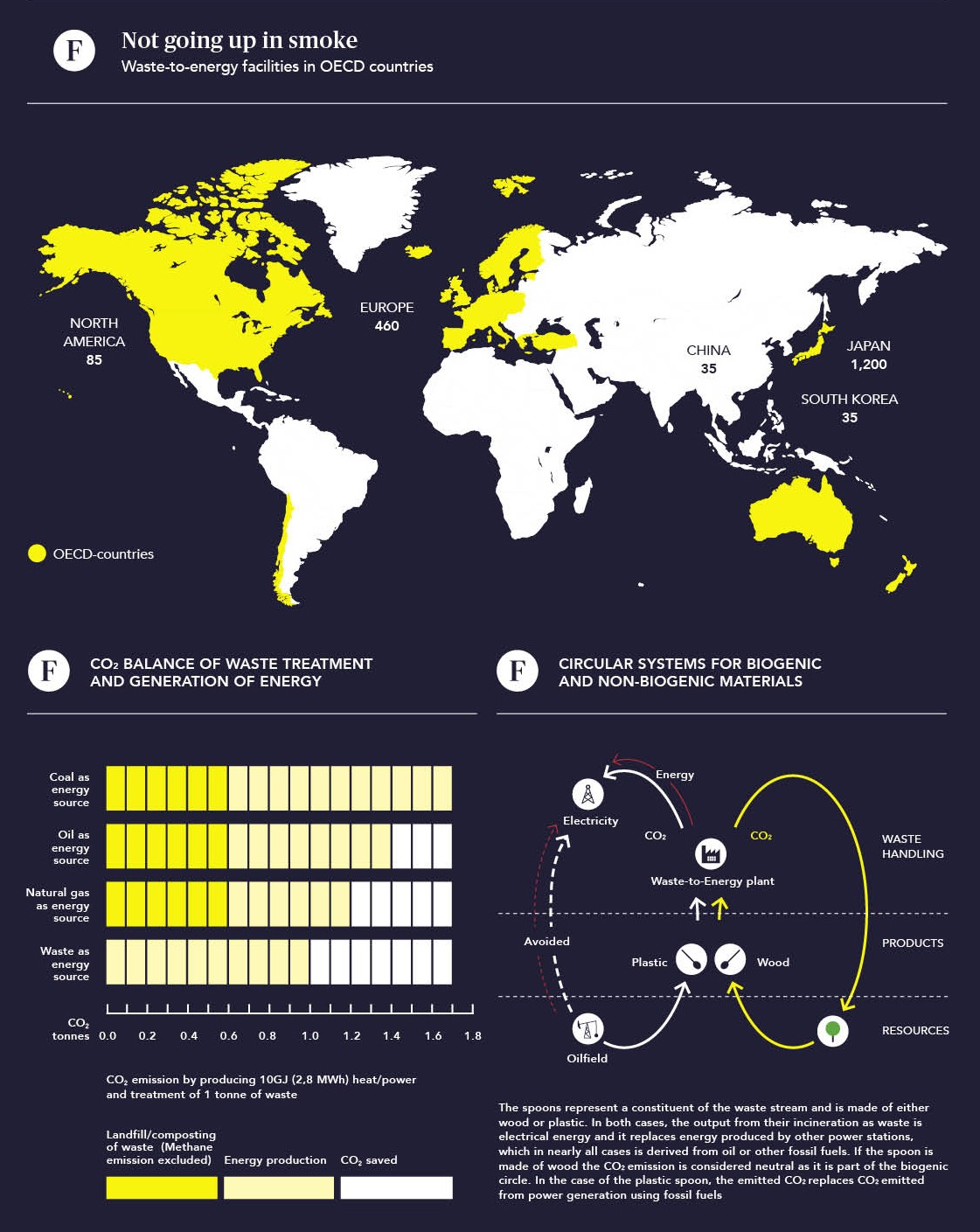Several European countries and Japan burn a significant proportion of their waste and recycle much of the rest. In other places, trash tends to end up in landfill sites for want of an alternative solution.
WASTE DISPOSAL
The fundamental challenge of waste management is to get as much out of rubbish as possible, with the aim of conserving natural resources. Given that materials are often worth more than energy, partly because they can be transformed into energy but energy cannot be transformed into materials, resource recovery from waste tends to attract more attention than energy recovery from waste. It all depends on the type of waste. If it is a high-value material easily recovered, such as plastic, glass, metal and newspapers, material recovery is the most sustainable option. Burning rubbish, however, can make sense when the waste materials are low-value, contaminated or not easily recycled. When energy from waste incineration replaces energy produced from fossil fuels, those resources are saved, along with the associated CO2 emitted. Once materials are so degraded from constant recycling that they are of no further use, deriving energy from them is preferable to discarding them at a landfill site.
Around 2000 incineration facilities burn garbage in the OECD countries. Japan leads the way with around 1100 waste burning plant (see chart), although the numbers can be deceiving. Most of Japan’s incineration units are small and on average deal with just one fifth of the material that passes through a Euro- pean counterpart.
 From a typical 3 kg bag of household rubbish, the Amager Bakke waste-to- energy plant can supply a standard Copenhagen residence with six hours of heat and five hours of electricity
From a typical 3 kg bag of household rubbish, the Amager Bakke waste-to- energy plant can supply a standard Copenhagen residence with six hours of heat and five hours of electricity
Energy by-products
Heat and power are the main by-products from waste incineration, but other forms of energy, such as gas or biofuels, can also be recovered in small quantities. According to Tore Hulgaard from the waste-to-energy division at Rambøll, a Danish engineering consultancy, to burn or not to burn is not a question with a clear-cut answer. It depends on multiple factors such as waste composition and the nature of the concerned energy system. He points out that the central discussion related to recycling versus incineration is whether it creates value financially, environmentally and in terms of resource management. “It’s as if recycling rates have become targets in themselves. We need to make sure that we don’t generate huge amounts of low-quality recycled products and instead focus on what actually adds value to society and the planet as a whole,” he says. •
SOURCE International Solid Waste Association
